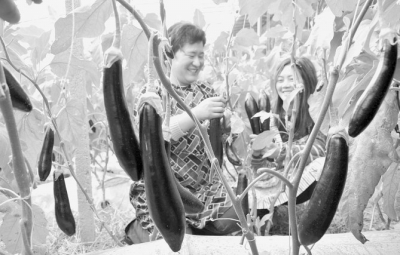2007年12月19日美国农业部网消息,研究人员已经发现了一种新的猪流感病毒H2N3,这种病毒属于H2流感病毒组,是由禽流感和猪流感的基因分子共同组成的。科学家从猪流感H2N3病毒中可以分离出H2和N3混合基因片段,正是这种基因特性赋予了H2N3病毒具有感染猪的能力。猪有可能充当起“病毒携带”的角色,把流感病毒由禽类、猪携带给人类。(国际情报研究室)
【原文】
New Swine Flu Has Avian Flu Genes
By Ann Perry
December 19, 2007
Researchers have identified a new strain of swine influenza—H2N3—which belongs to the group of H2 influenza viruses that last infected humans during the 1957 pandemic. This new strain has a molecular twist: It is composed of avian and swine influenza genes.
Agricultural Research Service (ARS) veterinarians Juergen Richt, Amy Vincent, Kelly Lager and Phillip Gauger conducted this research with Iowa State University (ISU) visiting scientist Wenjun Ma, ISU veterinarian Bruce Janke and other colleagues at the University of Minnesota and St. Jude Children’s Research Hospital. The ARS veterinarians work at the agency's National Animal Disease Center in Ames, Iowa.
The group studied an unknown pathogen—first identified by University of Minnesota veterinary diagnostician Marie Gramer—that infected two groups of pigs at separate production facilities in 2006. Both facilities used pond water frequented by migrating waterfowl.
Molecular studies indicated the unknown pathogen was an H2N3 influenza virus that is closely related to an H2N3 strain found in mallard ducks. But this was the first time it had been observed in mammals.
Influenza viruses have eight gene segments, all of which can be swapped between different virus strains. Two of these gene segments code for virus surface proteins that help determine whether an influenza virus is able to infect a specific host and start replicating—the first step in the onset of influenza infection.
In the newly isolated swine H2N3, the avian H2 and N3 gene segments mixed with gene segments from common swine influenza viruses. This exchange—and additional mutations—gave the H2N3 viruses the ability to infect swine. Lab tests confirmed that this strain of H2N3 could also infect mice and ferrets.
These findings provide further evidence that swine have the potential to serve as a “mixing vessel” for influenza viruses carried by birds, pigs and humans. It also supports the need to continue monitoring swine—and livestock workers—for H2-subtype viruses and other influenza strains that might someday threaten swine and human health.
Results of this study were published online this week in the Proceedings of the National Academy of Sciences of the United States of America.
声明
来源:互联网
本文地址:http://farm.00-net.com/news/2/2007-12-25/3947.html















